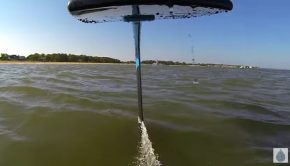Here comes the Sargassum
Published on March 20th, 2023
The ocean scientists with the Waterlust Team seek to inspire and educate, with this report explaining the seasonal phenomenon of sargassum:
In the past week, you may have seen stories in the news about a massive blob of seaweed heading toward Florida. If you throw “sargassum” into the google and press enter, buckle up for one apocalyptic headline after the next. So what’s the deal? Have the seaweed overlords come to take what’s theirs?
Yes and no…
This floating brown salad is actually a collection of algal species in the genus Sargassum. It forms far out in the Atlantic in a stretch of water called the Sargasso Sea, and in normal conditions, it stays on its side of the fence, and we stay on ours. BUT like seemingly every environmental process these days, new “normals” are upon us.
Since 2011, scientists have observed large floating swaths of Sargassum drifting out of the tropical Atlantic into the Caribbean sea and Gulf of Mexico every spring and summer. What is causing this is still being examined, but increased ocean temperatures and nutrient loading from coastal runoff are thought to be key contributors.
But unlike the harmful algal blooms that create red tides, sargassum algal blooms aren’t entirely bad. At moderate levels, like having a single glass of wine at dinner, sargassum brings life to the party. It creates habitat for many species and is a constructive contributor to the ecosystem.
But at high levels, like polishing off a whole bottle of cab sav solo (no judgment, we’ve all been there), the scene can get ugly. Island nations can become overrun with it, corals can get cut off from sunlight, and the gases it emits while decomposing can cause health risks.
It’s still too early to tell how big this year’s algae invasion will be, but according to the February 2023 Sargassum Outlook Bulletin (yes, that’s a thing), there are “glimmers of hope” that this year won’t be as bad as feared.
Want to learn more? Dive into a wonderful article by Jamaican scientist Jhénelle Williams on our blog that explores all things sargassum: click here









 We’ll keep your information safe.
We’ll keep your information safe.